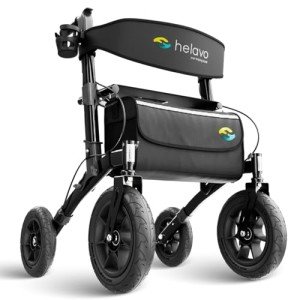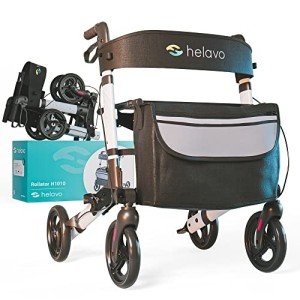
Affordable Rollator Walker
Ajouter un commentaire SuivreVue d'ensemble
-
Fondée Date mars 23, 1932
-
Les secteurs Accompagnement enfants avec besoin spéciaux
-
Offres D'Emploi 0
-
Vu 5
Description De L'Entreprise
See What Stable Walker Tricks The Celebs Are Utilizing
Exploring the Innovations of Stable Walker Technology
In the ever-evolving world of robotics and automation, the idea of a “stable walker” has emerged as an interesting intersection of design, technology, and biomechanics. A stable walker refers to a robotic system efficient in maintaining balance and passing through different terrains, mimicing human-like movement. This article provides an extensive expedition of stable walkers, their parts, applications, and the technological advancements that continue to push the limits of what these devices can accomplish.

What Makes a Walker “Stable”?
At its core, stability in a robotic walker is defined by its ability to stay upright and navigate a variety of surface areas without falling. A number of elements contribute to a Compact Walker‘s stability:

- Center of Gravity: A lower center of mass typically improves stability. Designers frequently position parts tactically to enhance this aspect.
- Sensing units: Advanced sensors assist the walker identify modifications in the environment, enabling real-time changes to maintain balance.
- Actuators: These parts make it possible for motion and play a crucial role in constant navigation.
- Algorithms: Sophisticated algorithms process sensing unit data and identify the best movements, enabling adaptive walking.
Table 1: Key Components of Stable Walkers
| Element | Function |
|---|---|
| Sensing units | Find ecological conditions and help in balance |
| Actuators | Propel movement in numerous directions |
| Control Systems | Integrate sensing unit input to make real-time balance adjustments |
| Power Supply | Offer needed energy for functions and movement |
Applications of Stable Walkers
The applications of stable walkers are vast and differed, spanning several fields. Below are some essential locations where these innovations are making an impact:
-
Healthcare:
- Rehabilitation: Stable walkers can assist clients recovering from injuries or strokes by providing support while they regain their mobility.
- Exoskeletons: Wearable robotic gadgets can aid people with mobility problems, enabling them to stroll once again.
-
Browse and Rescue Operations:
- Unmanned stable walkers can navigate tough surfaces during search operations after natural disasters. They are vital in reaching areas that are inaccessible to humans or wheeled lorries.
-
Elderly Assistance:
- Robotic walkers designed for the elderly can help keep self-reliance by using support for movement and navigation around the home.
-
Industrial Applications:
- In settings where heavy loads require to be transported, stable walkers can help employees by bring items without the threat of losing balance.
Table 2: Applications of Stable Walkers
| Application Area | Use Case Description |
|---|---|
| Health care | Rehabilitation support and exoskeletons for mobility |
| Search & & Rescue | Navigating disaster-struck areas for recovery operations |
| Elderly Assistance | Supporting mobility for elderly people |
| Industrial | Bring heavy loads in intricate environments |
Technological Advancements
Robotic walkers have advanced substantially over the past few years due to enhancements in numerous vital locations:
- Sensor Technology: Enhanced sensing units such as LiDAR, ultrasonic, and video cameras offer in-depth environmental mapping, enabling walkers to make more educated choices on the move.
- Expert System (AI): AI and artificial intelligence algorithms help with much better forecast models for movement, making it possible for robotic walkers to discover from their experiences and improve with time.
- Battery Life: The advancement of lighter, more effective battery innovations guarantees that stable walkers can run longer with less regular charging.
- Products Science: Innovations in products, such as lightweight composites, enhance the resilience and performance of robotic walkers.
Difficulties Facing Stable Walkers
In spite of the exciting advances in stable walker technology, various challenges remain. Some of these consist of:
- Complex Environments: Navigating unforeseeable surfaces is still a considerable obstacle for many walkers.
- Cost and Accessibility: Many advanced robotic walkers are expensive, limiting their ease of access to a wider audience.
- User Adaptation: Training users to efficiently run or adjust to robotic walkers is vital, especially in health care applications.
Regularly Asked Questions (FAQ)
1. Can stable walkers be utilized outdoors?Yes, numerous stable Helavo Rollator Walkers are developed to operate in numerous outdoor conditions, with Innovative Rollator Features to pass through unequal terrain.
2. How do stable walkers vary from standard wheelchairs?Stable walkers offer active support, enabling mobility and movement similar to walking, whereas wheelchairs offer seated assistance without enabling walking motion.
3. Are stable walkers safe for older adults?Yes, they can considerably improve the security of older adults by offering stability and decreasing the danger of falls. However, users must be trained on their proper usage.
4. What is the future of stable walker technology?The future points towards more autonomous systems utilizing Advanced Mobility Aid AI, allowing walkers to make choices in real-time and adjust to user choices and environments.
The exploration of stable Non-Slip Walker technology uncovers a remarkable world full of potential. These advanced machines mix engineering, artificial intelligence, and human-centered design to deal with critical difficulties in mobility and availability. With ongoing advances set to additional fine-tune their capabilities, stable walkers represent a key development with the guarantee to change how people move and engage with their environments. Whether in health centers, catastrophe zones, or homes, the effect of stable walkers continues to grow, enhancing lives and offering support in methods that were once believed difficult.
As technologies progress and the integration of AI and effective materials continues, the future of stable walkers seems not just promising but vital ahead of time human mobility and independence.